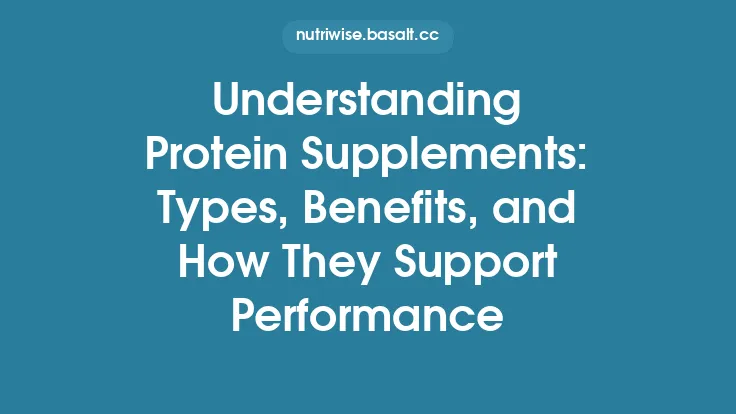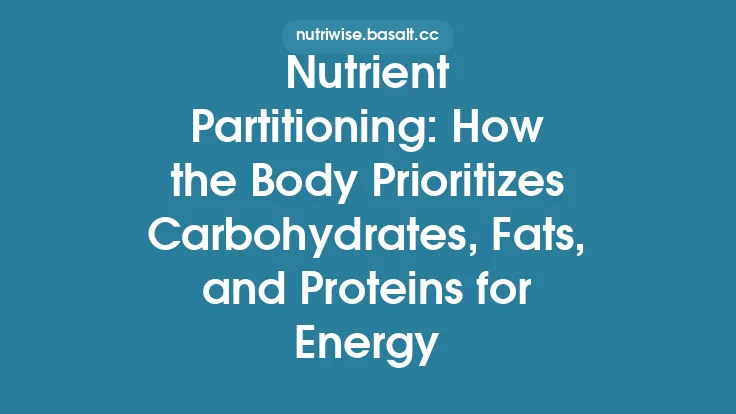Dietary fats are far more than a source of calories; they are essential architects of the body’s hormonal landscape and the very fabric of every cell. When we consume fats, they are broken down, reassembled, and woven into complex structures that enable hormones to be synthesized, released, and received. Understanding how these processes work provides a clear picture of why adequate, quality fat intake is a cornerstone of metabolic health, growth, reproduction, and stress resilience.
The Biochemistry of Dietary Lipids: From Triglycerides to Cellular Building Blocks
When fats enter the digestive tract, enzymes split triglycerides into glycerol and free fatty acids. These components are then re‑esterified inside intestinal cells to form chylomicrons, which ferry the lipids through the bloodstream to tissues. Once inside cells, fatty acids can follow several fates:
- Oxidation – generating ATP for energy.
- Storage – as triglycerides within lipid droplets for later use.
- Structural incorporation – becoming part of phospholipids, cholesterol esters, and sphingolipids that compose cellular membranes.
It is this structural incorporation that underpins hormone production and cellular signaling. The body does not create these lipid scaffolds from scratch; it relies on the dietary supply of fatty acids and cholesterol precursors to maintain membrane integrity and to synthesize hormone molecules.
Cholesterol: The Precursor to Steroid Hormones
Cholesterol often receives a bad rap, yet it is the indispensable backbone for all steroid hormones. Within the adrenal cortex, gonads, and placenta, cholesterol is converted through a series of enzymatic steps into:
- Glucocorticoids (e.g., cortisol) – regulators of stress and metabolism.
- Mineralocorticoids (e.g., aldosterone) – controllers of fluid and electrolyte balance.
- Androgens (e.g., testosterone) and estrogens (e.g., estradiol) – drivers of sexual development and reproductive function.
The rate‑limiting step is the transport of cholesterol into the mitochondria, mediated by the protein StAR (Steroidogenic Acute Regulatory protein). Adequate dietary cholesterol and its endogenous synthesis ensure that this transport system has sufficient substrate, preventing bottlenecks in hormone output.
Phospholipids and Membrane Dynamics: Foundations for Cellular Signaling
Cell membranes are bilayers primarily composed of phospholipids—molecules that contain a glycerol backbone, two fatty acid tails, and a phosphate‑containing head group. The fatty acid composition (length and degree of saturation) dictates membrane fluidity:
- More saturated tails → tighter packing, less fluid membranes.
- More unsaturated tails → kinks that prevent tight packing, increasing fluidity.
Fluidity is not a trivial property; it determines how easily membrane proteins—receptors, ion channels, and transporters—can move, interact, and change conformation. Hormone receptors embedded in the membrane rely on an optimal lipid environment to bind their ligands and trigger downstream signaling cascades.
Lipid Rafts and Receptor Function: Organizing Platforms for Hormone Action
Within the fluid mosaic of the plasma membrane, microdomains called lipid rafts form. These rafts are enriched in cholesterol, sphingolipids, and certain saturated phospholipids, creating ordered “islands” that serve as platforms for signaling complexes. Key features include:
- Concentration of receptors (e.g., insulin, growth factor receptors) that require close proximity for efficient signal transduction.
- Scaffolding for downstream kinases and adaptor proteins, facilitating rapid phosphorylation events.
- Regulation of endocytosis, influencing how long a hormone receptor remains on the cell surface.
Dietary fats that supply cholesterol and appropriate fatty acids help maintain the structural integrity of these rafts, directly influencing the potency and duration of hormonal signals.
Eicosanoids and Other Bioactive Lipids: Local Hormone‑like Mediators
Beyond classic steroid hormones, cells generate a suite of bioactive lipids that act locally to modulate inflammation, vascular tone, and platelet function. These include:
- Prostaglandins – derived from 20‑carbon fatty acid precursors, they mediate fever, pain, and uterine contractions.
- Thromboxanes – promote platelet aggregation and vasoconstriction.
- Leukotrienes – potent chemotactic agents in immune responses.
While the precise fatty acid precursors (often omega‑3 or omega‑6) are covered in other articles, the overarching principle remains: the body converts dietary fatty acids into signaling molecules that behave like hormones, exerting autocrine and paracrine effects that fine‑tune physiological processes.
Fat‑Soluble Vitamins and Hormone Regulation
Vitamins A, D, E, and K dissolve in lipid environments and rely on dietary fats for absorption and transport. Of particular relevance to hormone biology:
- Vitamin D – after conversion to its active form (calcitriol), it binds to nuclear receptors that regulate calcium homeostasis and modulate immune function.
- Vitamin A (retinoic acid) – interacts with retinoic acid receptors, influencing gene expression linked to cell differentiation and reproductive health.
Adequate dietary fat ensures these vitamins reach their target tissues, where they can act as co‑regulators of hormone‑driven gene transcription.
Nuclear Receptors and Gene Expression: How Lipids Influence Cellular Programs
Many hormones exert their effects by binding to nuclear receptors, a class of transcription factors that directly modulate gene expression. Lipid‑derived ligands for these receptors include:
- Steroid hormones (e.g., cortisol, estrogen) – bind glucocorticoid, mineralocorticoid, estrogen, and androgen receptors.
- Retinoids – activate retinoic acid receptors.
- Vitamin D metabolites – engage the vitamin D receptor.
Upon ligand binding, receptors dimerize, translocate to the nucleus, and attach to specific DNA response elements, recruiting co‑activators or co‑repressors. The resulting transcriptional changes dictate protein synthesis, influencing metabolism, immune responses, and tissue remodeling. Without sufficient lipid precursors, the synthesis of these ligands stalls, attenuating the downstream genomic effects.
Dietary Fat Intake and Hormonal Balance: Practical Considerations
While the article avoids prescribing exact percentages, a few guiding concepts help maintain hormonal harmony:
- Consistent Supply – Regular meals containing a moderate amount of fat prevent abrupt drops in circulating cholesterol and fatty acid levels, supporting steady hormone synthesis.
- Diverse Fat Sources – Incorporating a variety of whole‑food fats (e.g., nuts, seeds, fish, dairy, and plant oils) supplies a broad spectrum of fatty acids and cholesterol needed for different biosynthetic pathways.
- Timing with Nutrient Interactions – Pairing fats with fat‑soluble vitamins and certain minerals (e.g., zinc for testosterone synthesis) enhances absorption and utilization.
These considerations help the endocrine system operate without the need for extreme dietary swings.
Interplay Between Fat Metabolism and Cellular Energy Homeostasis
Beyond hormone production, lipids serve as a metabolic buffer. When glucose availability wanes, fatty acids undergo β‑oxidation, generating acetyl‑CoA, NADH, and FADH₂, which feed the citric acid cycle and oxidative phosphorylation. The resulting ATP supports energy‑intensive processes such as:
- Steroidogenesis – an ATP‑dependent cascade within mitochondria.
- Membrane remodeling – phospholipid synthesis and turnover require energy.
Thus, adequate dietary fat not only provides raw material for hormones but also fuels the cellular machinery that assembles and deploys them.
Summary and Takeaways
- Structural Role – Dietary fats are incorporated into phospholipids, cholesterol, and sphingolipids, forming the membranes that host hormone receptors and signaling complexes.
- Precursor Function – Cholesterol is the backbone for all steroid hormones; fatty acids are the building blocks for eicosanoids and other bioactive lipids.
- Membrane Dynamics – Fatty acid composition dictates membrane fluidity, influencing receptor mobility and signal transduction efficiency.
- Lipid Rafts – Cholesterol‑rich microdomains organize receptors and downstream effectors, amplifying hormonal responses.
- Nuclear Signaling – Lipid‑derived ligands activate nuclear receptors, directly controlling gene expression patterns that govern growth, metabolism, and reproduction.
- Vitamin Synergy – Fat‑soluble vitamins depend on dietary lipids for absorption and act as co‑regulators of hormone‑driven pathways.
- Energy Integration – Fat oxidation supplies the ATP needed for hormone synthesis and membrane maintenance, linking energy status to endocrine function.
In essence, the fats we eat are the raw material and power source for the body’s hormonal orchestra. By ensuring a steady, varied intake of quality dietary fats, we support the intricate biochemical choreography that underlies growth, stress adaptation, reproduction, and overall cellular vitality.





